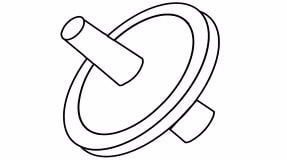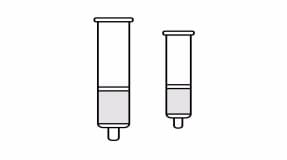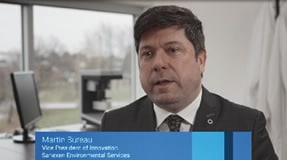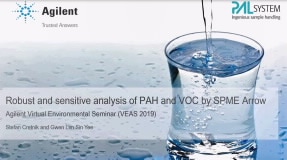Sample Filtration
Both Captiva EMR-Lipid and Captiva EMR with Carbon S can be adopted after typical extraction methods, such as QuEChERS extraction, solvent/liquid-liquid extraction, and protein precipitation. They provide highly selective and efficient sample matrix removal with minimal impact on target analyte recoveries.
Advantages of using Captiva EMR chemical filtration include improved analyte recovery and reproducibility, reduced matrix effect, and cleaner chromatographic background which improves data quality and reduces reruns. Captiva EMR products also improve instrument sustainability with less instrument downtime. Compared to commonly used methods, Captiva EMR chemical filtration provides a more simplified workflow, saves analyst time and effort, and improves the overall productivity.
Captiva physical filtration products utilize a porous membrane and frits for the physical removal of particulates. These products include Captiva filter vials, filter plates and cartridges, and syringe filters.
These products are typically recommended for samples prior to instrument injection, especially for LC and LC/MS analysis, to prevent particulates getting into LC column and detection system. Particulate contamination can result in detection flow path blocking, column back pressure accumulation, and MS source deposition. The membranes used in the physical filtration products include typical filter membrane from hydrophilic to hydrophobic membranes, glass fiber and depth filter, and common membrane pore sizes for each type of membrane.
In addition to traditional syringe filters, Agilent offers an extensive line of filter vials. Captiva filter vials, also available in pre-slit options, improve ease of use with less accessories needed and less sample transfer. Built with a unique nondrip (ND) membrane, Captiva ND plates allow for solvent-first protein precipitation using methanol or acetonitrile. Captiva’s unique dual filter design offers fast uniform flow while avoiding sample loss and filter plugging. Captiva ND filtration products support a convenient in-well protein precipitation workflow, making it much more streamlined and easier to conduct. Our 96-well plates are perfect for high-throughput, automated, in-well protein precipitation. The benefits of Captiva physical filtration include optimal instrument performance, reduced system downtime, extended column lifetime, and greater sample integrity.






